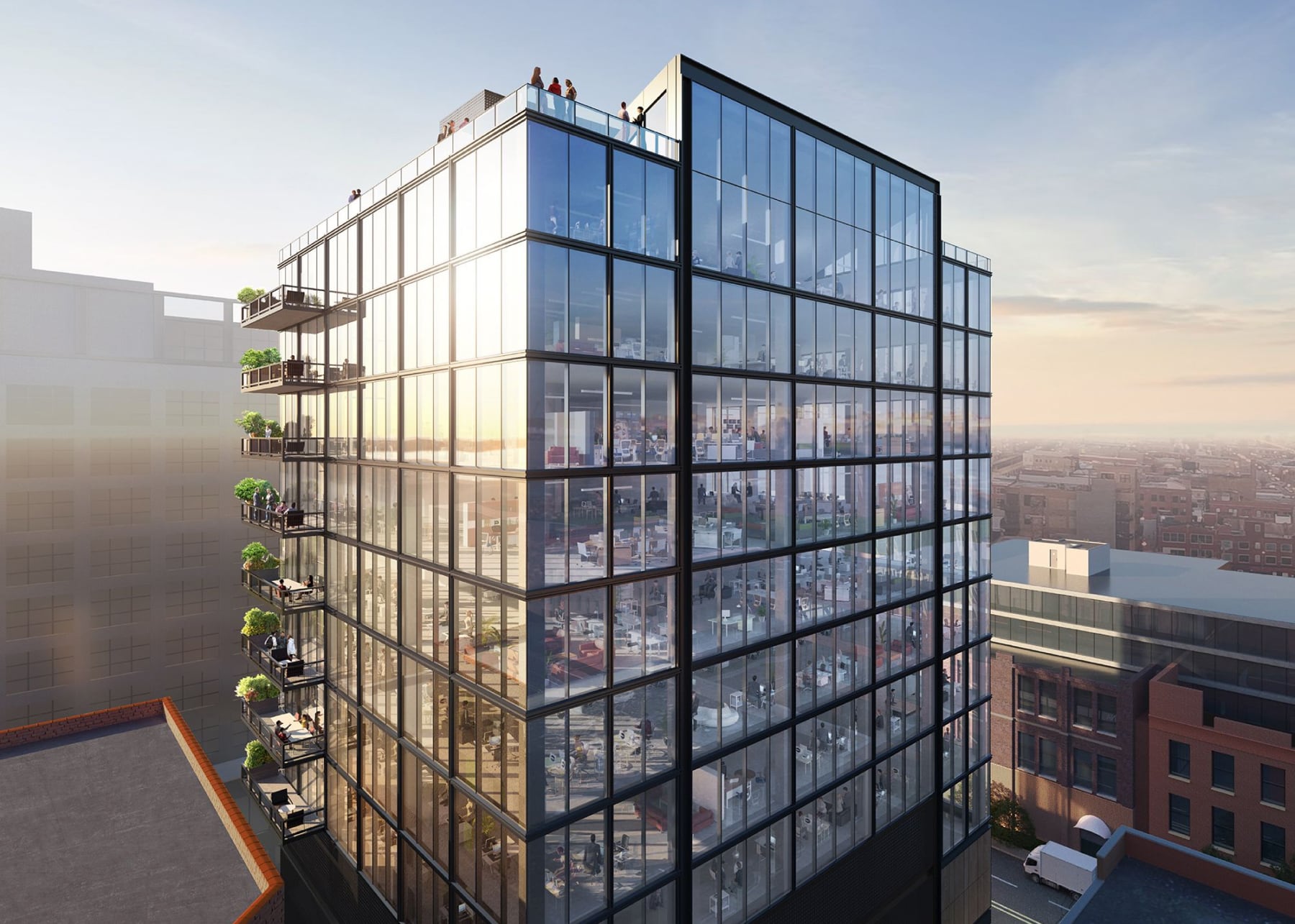Will COVID-19 change commercial architecture? It already has.
Architects, designers, and engineers worldwide are working to adapt existing projects—and create new ones—to better protect their buildings’ inhabitants from contamination. Because, even when this pandemic is over, people will still demand more effective hygiene practices in the spaces where they work and gather.
We’re excited to see what new directions and innovations will arise to meet this challenge—and we already have one excellent example right in our hometown, just down Interstate 90.
Fulton East, a brand-new commercial office and retail building in Chicago’s Fulton Market District, is the nation’s first next-generation office building designed to specifically address the health, safety, and wellness concerns of the post-COVID-19 environment.
We’re proud that several Sloan products are featured prominently in this landmark building’s hygiene innovations. Here’s a closer look.
Hands-free Innovation in the Elevator and the Restroom
One major pillar of hygiene best practices gaining widespread recognition is the fact that the fewer surfaces people have to touch, the lower the likelihood of diseases being transmitted.
That’s why Fulton East installed the world’s first new-construction installation of the Toe-To-Go (T2G) elevator system, where foot-activated call buttons let people operate the elevators without using their hands. This hands-free experience reduces the spread of germs.
People will find another hands-free experience in the restrooms, which feature:
- Sloan Optima® sensor solar-powered faucets
- Matching soap dispensers
- Sloan SOLIS® sensor flushometers for water closets
- Ultra-low-flow SOLIS sensor flushometers for urinals
These stylish fixtures let people use toilets and urinals without ever touching them with their hands and wash their hands without ever touching the faucet, soap dispenser, sink, or deck, minimizing the potential spread of disease.
Hygiene, Social Distancing, and Sustainability
Another Sloan innovation makes the restrooms at Fulton East even more hygienic: proprietary SloanTec® Hydrophobic Glaze inhibits the growth of germs and bacteria in toilets and urinals, making them easier to clean and keeping them cleaner, longer.
Finally, to enhance social distancing, all the building’s restrooms have been constructed with one more fixture than the requirements of Chicago’s city code. And each floor plate is designed for single-tenant use, so the restrooms on each floor will be used by only one group of people to reduce cross-contamination.
It’s also important to note that the water savings achieved by the SOLIS Flushometers also help Fulton East maintain its LEED certification.
Innovative Design Makes Fulton East a Healthier Environment
Beyond elevators and restrooms, Fulton East offers a number of other innovative measures to make its environment healthier:
- It’s one of the first multi-story office buildings to employ airPHX (“air fix”) non-thermal, plasma technology to help eliminate 90% to 99% of viruses, bacteria, and mold, both on surfaces and in the air.
- Spacious, 10,605-sq-ft floor plates accommodate safe social distancing and allow for custom space planning.
- The lobby security desk will check people’s temperatures with touch-free thermal scanning.
- The building’s security and intercom systems—both during business hours and after-hours—will operate via touch-free key fobs and mobile phone access.
We’re proud to be a part of a building that’s sure to be a model for many more to come. The COVID-19 pandemic will end, but hygiene will continue to be a central focus for commercial architecture and design moving forward. And Sloan is ready to help.
Sloan technology has contributed to the construction and renovation of many of the world’s most advanced office facilities. Want ideas for making your next project more stylish, more hygienic, and more efficient? Contact Sloan!
Stay Up to Date
Sign up for the Sloan blog to receive information on the latest trends in commercial building, technology advancements and product updates. It's the leading source of industry news for architects, designers, engineers and contractors.
